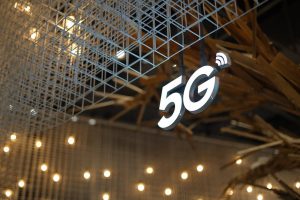Unveiling Japan’s Broadband Paradox: Advanced Infrastructure but Lagging Reality

Japan’s Broadband Leadership: A Surprising Paradox
Japan is widely recognized as a global leader in broadband infrastructure. With nearly 100% of households covered by fiber-optic networks and consistent top rankings in OECD broadband penetration reports, the country is often celebrated as a digital innovation powerhouse. However, a closer examination reveals a perplexing contrast. While Japan excels in technological infrastructure, its actual broadband performance falls short, ranking only 24th globally for fixed broadband speeds in Ookla’s June 2025 rankings. This disparity, often referred to as Japan’s ‘broadband paradox,’ raises questions about transparency, consumer satisfaction, and regulatory oversight.
The Scope of the Issue: Misleading Advertisements
Despite technological advancements, the experiences of Japanese broadband users highlight significant gaps between advertised and actual speeds. A recent survey involving 640 broadband customers revealed critical insights into consumer priorities and frustrations. Notably, over 25% of users couldn’t recall the speed of their internet plans, while nearly 60% admitted to being unaware of the meaning behind ‘best-effort,’ a disclaimer used by Internet Service Providers (ISPs) to indicate that real service speeds may vary substantially from theoretical claims. Worse, customers subscribed to premium-priced plans often reported receiving a smaller fraction of their promised speeds, indicating a pattern of over-promotion and under-delivery. Unsurprisingly, 65% of users expressed a desire for compensation when service quality fell below expectations.
Regulatory and Market Failures
Japan’s regulatory landscape plays a key role in perpetuating this issue. While the country enforces broad consumer protection through the Act Against Unjustifiable Premiums and Misleading Representations, the fixed broadband sector operates under ‘soft-law’ guidelines. These regulations permit ISPs to advertise the maximum theoretical speeds achievable under ideal conditions, accompanied only by a vague ‘best-effort’ disclaimer. This contrasts sharply with the stricter, legally binding measures in regions like the United States and the European Union, where ISPs must disclose actual performance metrics alongside theoretical ones. Without similar legislative pressure in Japan, providers are caught in a ‘prisoner’s dilemma’: any company that chooses honesty risks losing market share to competitors who exaggerate their capabilities. The result is an ecosystem of low trust, where exaggerated promises remain the norm and consumer dissatisfaction proliferates.
Transparency as the Key Forward
The path to resolving Japan’s broadband paradox lies in embracing transparency as a competitive advantage rather than a regulatory burden. A trusted, multilayered system for monitoring broadband speeds could incentivize providers to deliver on their promises while empowering consumers with actionable data. Verified metrics on speed discrepancies can also serve as evidence for complaints under existing consumer protection laws, ensuring greater accountability. Moreover, regular publication of comparative performance reports by independent third parties would exert reputational pressure on ISPs to align advertised speeds more closely with real-world performance. Over time, this transparency can create a high-trust market environment where quality and honesty are rewarded.
Unlocking Japan’s Digital Potential
The current state of Japan’s broadband market shows that while the physical infrastructure is in place, significant efforts are needed to ensure that service quality matches these advancements. By prioritizing transparency and accountability, the Japanese telecommunications industry can build a healthier, more competitive market. This shift would empower consumers to make better-informed choices and reward providers who prioritize quality over exaggerated claims. Realizing this vision would not only strengthen Japan’s domestic market but also reinforce its position as a true global leader in digital connectivity.



